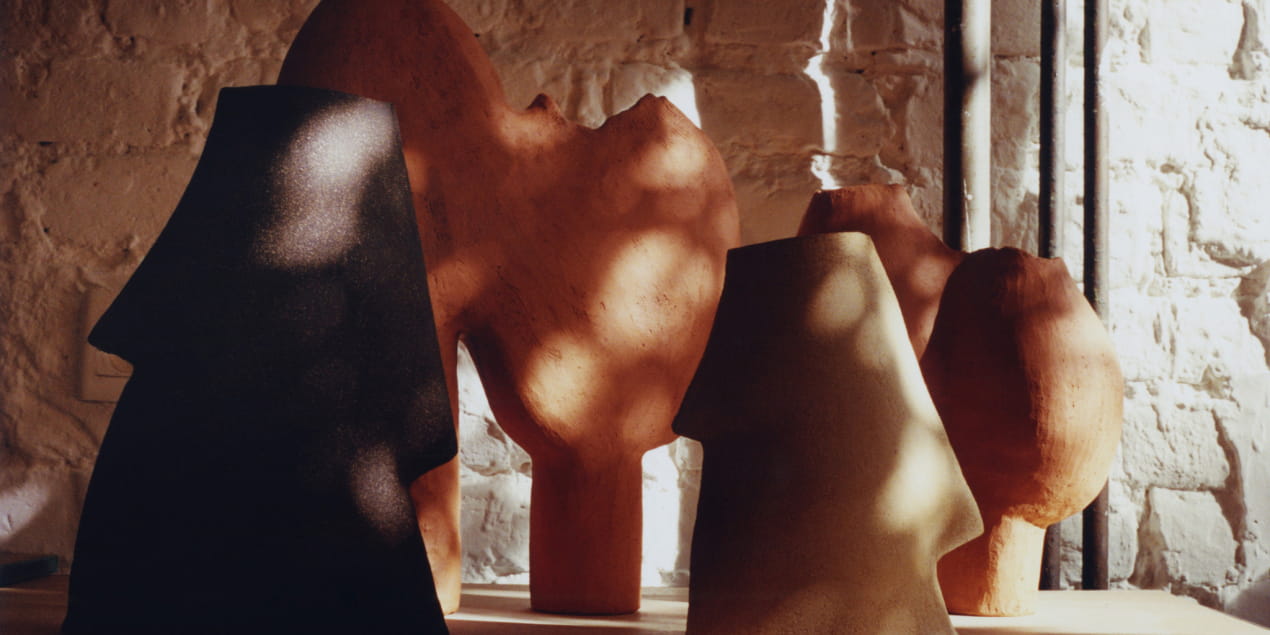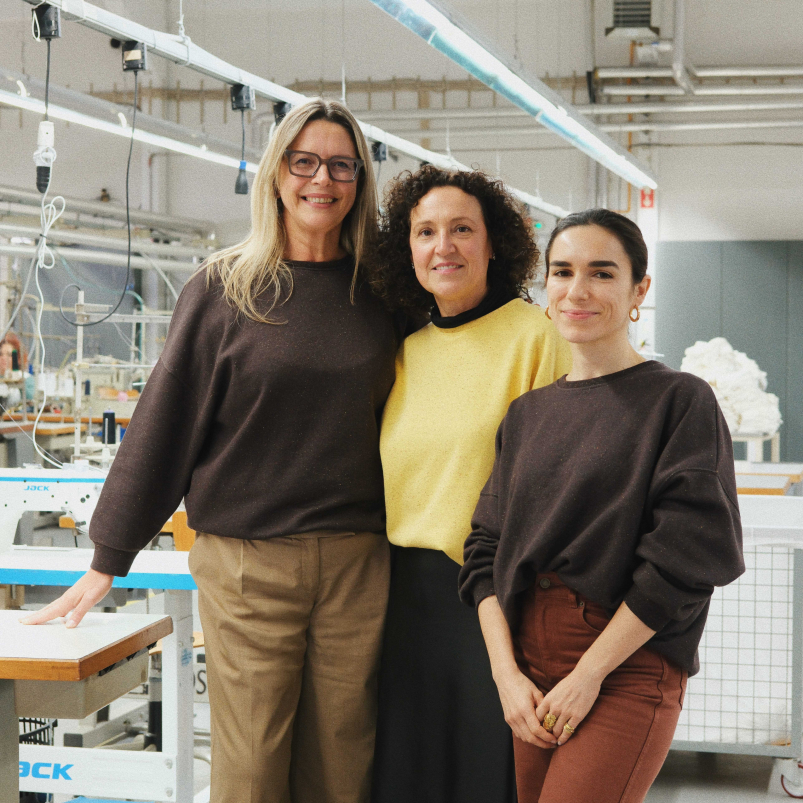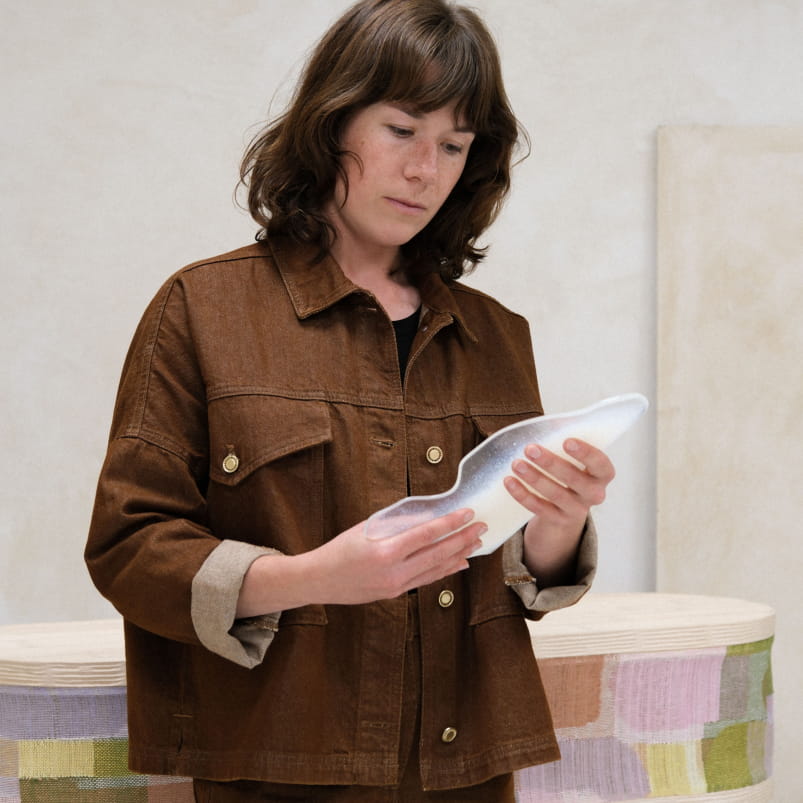CRÉDIT PHOTOS : Tanguy Sergheraert
Guylène Galantine has always had a passion for objects. She believes that they represent a form of dream and beauty needed in an increasingly dematerialized world. Her Variations sur patte is a series of sculptural objects halfway between art and utility. Inspired by the curves and lines of the human body, as well as the plant and animal worlds, she explores form and material from her Roubaix studio, following the idea that handcrafting is essential to the balance of the world. Let's meet her!
When and how did you discover ceramics?
I've always had a special relationship with objects, whether through design or sculpture. It’s often been unconsciously at the heart of my career path, whether it was in buying art pieces or later in interior architecture and decoration. I got so close to objects that I began to think I could make them too. Ceramics was an obvious choice, it is the most primitive discipline for making an object. So I took a course in shaping clay. That was it, and the adventure began.

Which technique do you use most often?
I craft coils, it is the oldest technique which gives me great freedom of form. The relationship between hand and material is the most direct and intuitive. The object takes shape under your fingers, without tools or machines.
How did you come to learn this art?
I trained for 3 years with a visual ceramist, Sandrine Hurtrer. That’s how I discovered the different techniques of stamping, shaping, molding...


What are your "Variations sur pattes" about?
As the name suggests, "Variations sur pattes" is a series of objects/sculptures that share an anthropomorphic element: legs; they are literally standing objects. I wanted to create a series of objects that could function on their own and together. A bit like a family, each sculpture has its own particularities in terms of texture, color and shape, and at the same time, they all belong together. In retrospect, the idea was expressed through a gesture, as is often the case in my work.
What is the most representative piece of your work?
Probably the "Variations sur pattes" series which heralds new discoveries in my aesthetic search. I produce them in both large and small pieces, in colors that are always close to the skin. I play with the often irregular curves and lines of human forms, feminine and round, animal and vegetable. So I'd say it's an important series more than a representative one.

What are your sources of inspiration?
My inspirations are many and varied, and childhood has a major influence on the development of taste and sensitivity. My Creole cultural heritage is a major element in my work, as are the ochre earths of Guadeloupe, the lush natural surroundings and the engraved rocks of the Arawaks. I do not tend to prioritize my influences and inspirations; I'm very fond of folk art and art brut, just as I am of the Bauhaus or Oscar Niemeyer. I love Eileen Gray for her dialogue between the plastic arts and architecture. Enzo Mari for the DIY and political aspects. Giorgio Morandi's painting, which, through the repetition of his still lifes, emanates a deep melancholy. Salvatore Fiume for the contribution of African art to modern sculpture... But inspiration can also come from browsing through flea markets. Inspiration is everywhere.
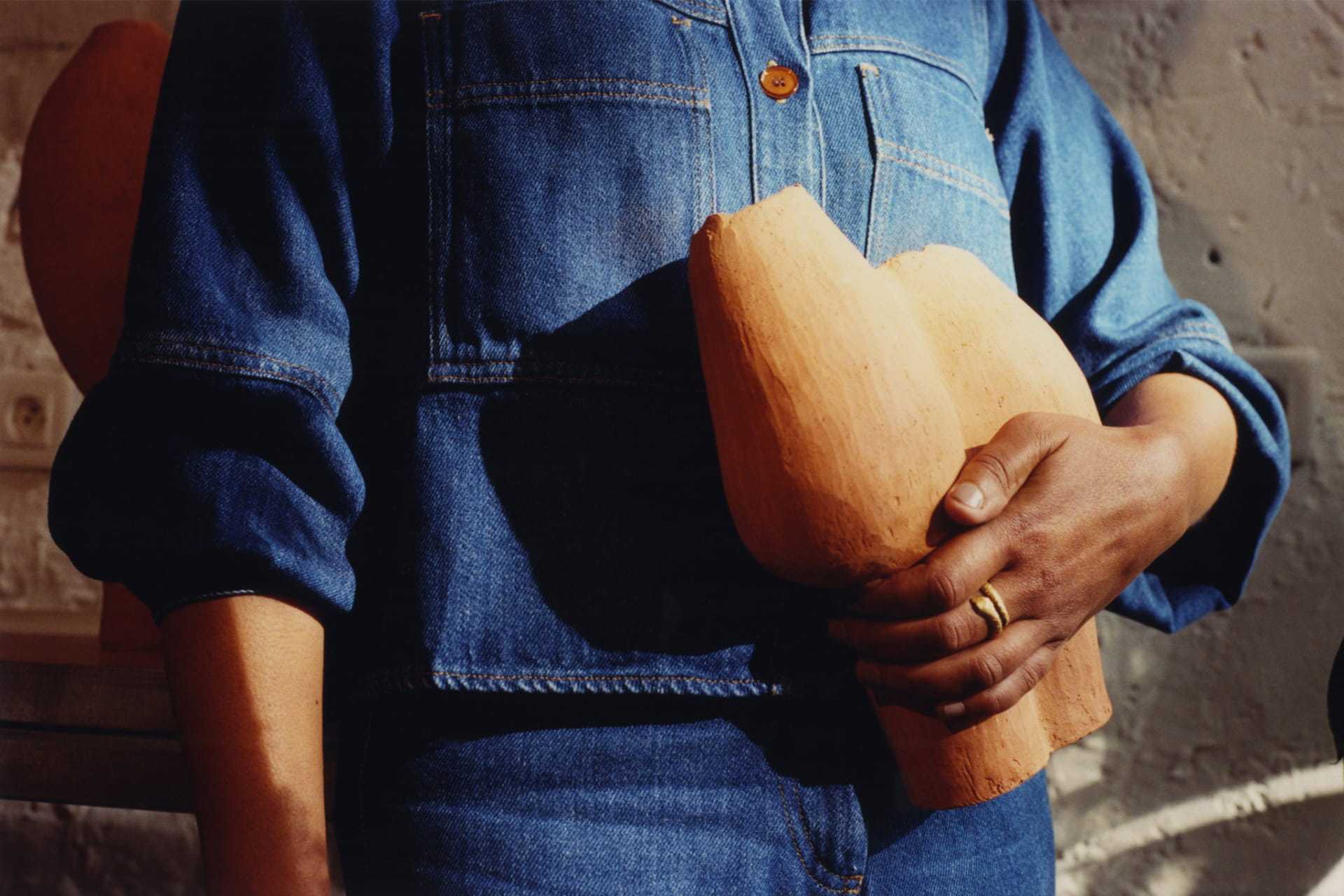
What role does creative exploration play in your practice?
There's a great deal of intuition in my work, and it's not easy to discern the actual execution of a piece from the thinking that went into it. Sometimes I draw and other times I put my hands in the clay without any preconceived idea of the object. It's not always that easy; you have to let yourself be carried along by the material, break away from the sketch and welcome the accident, the imperfection, the "Sabi", the letting go...
Your creations almost always hover on the border between sculpture and utilitarian objects. How do you view the revival of arts and crafts?
We live in a world where thinking about the way we consume is at the heart of society. There is no material interest or need to produce more objects. Yet the need to produce never ceases. The revival of craftsmanship bears witness to the relationship between gesture and transmission, and shows us just how essential craftsmanship is to the world's balance. Through its uniqueness and singularity, the object does us good, bringing us a little piece of dream and beauty in a world that is gradually becoming dematerialized. The idea of the sculptural object becoming utilitarian is at the heart of my thinking when I design a piece. It can stand on its own or be complemented by an element (branches, fruit, etc.). In this way, everyone can appropriate the object in their own way.


What's your latest artistic crush?
The exhibition dedicated to Isamu Noguchi, sculptor and designer, "Sculpter le monde" at the LAM (Lille Métropole Musée d'art moderne, d'art contemporain et d'art brut, in Villeneuve-d'Ascq). I love his work, which fluctuates between classical craftsmanship and radical modernity, and which echoes my own.
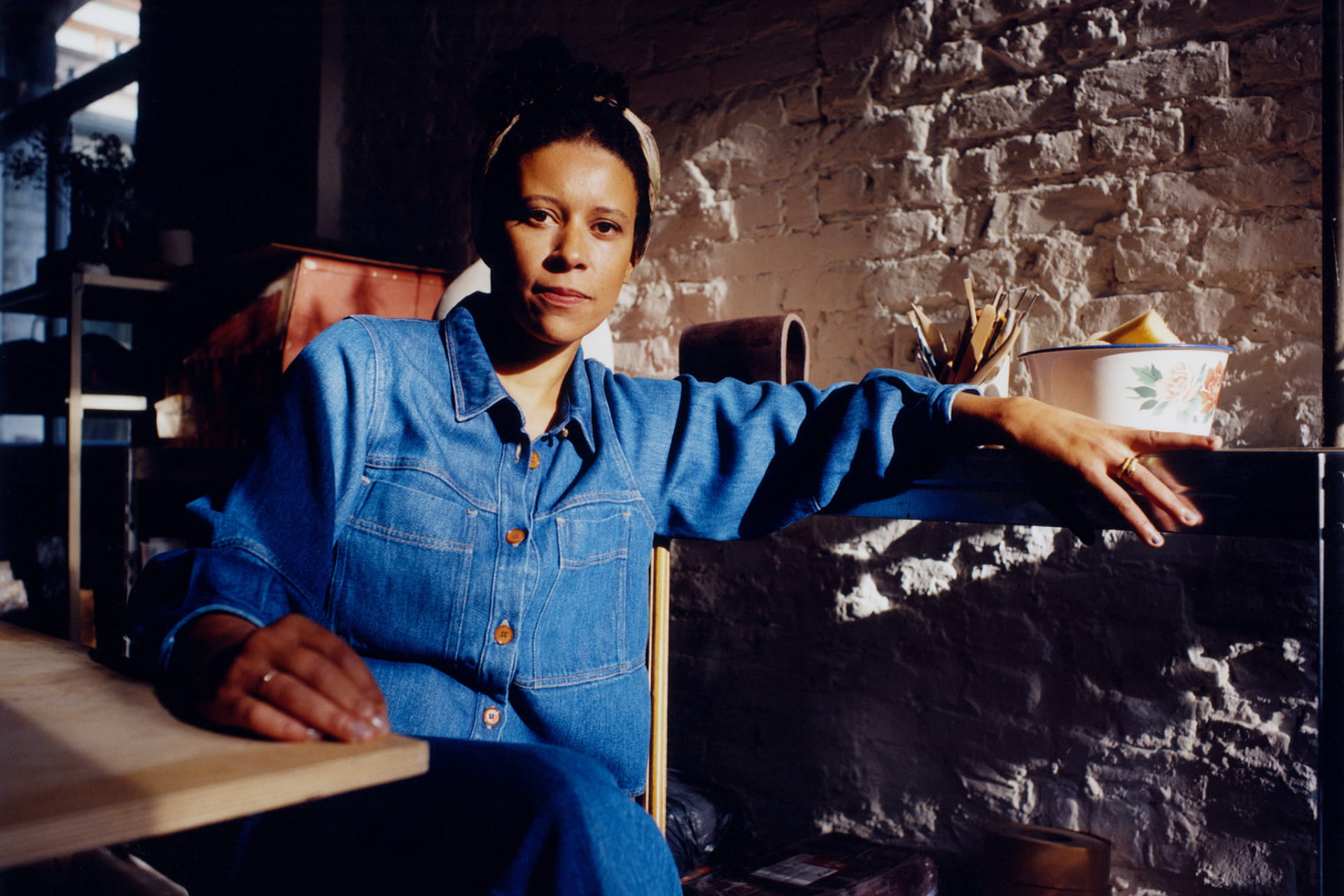
What does Sessùn mean to you?
The world of Sessùn moves me, its colorful range close to earthy colors and the beauty of clothes that exist for their functionality and comfort. Modern elegance and timeless cuts. Sessùn is also committed to showcasing artists and craftsmen whose approach is authentic, without artifice.
Any future projects to share with us?
I'm developing a set design project, integrating my objects for different homes, and I'm working on textile-dressed lighting fixtures for a project in Portugal that will soon come to fruition...

DISCOVER GUYLÈNE GALANTINE'S LOOK

